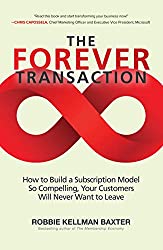by Fred Fuld III
In case you missed watching Warren Buffett’s Berkshire Hathaway (BRK-A) (BRK-B) Annual Meeting, or if you don’t feel like watching the four and a half hour rerun, it may be easier to see a quick Cliff Notes-like list of important points from the meeting.
Here is a quick summary of the meeting that was held online yesterday, May 2, at 4 pm ET, 1 pm PT.
Buffett started out with a PowerPoint presentation about the history of the United States. He was born during the 1930 depression.
The Depression
Warren Buffett was born August 30, 1930. The day before, the Dow Jones Industrial Average was 240.42, which was up 20% from the 1929 low. On September 1o, 1930, the DJUA reached a high of 245. No one realized that the country was in a Depression yet. On July 8, 1932, the DJIA dropped to 41.22. In other words, $1,000 became $170 in less than 2 years.
The FDIC
If we had the FDIC 10 years earlier, it would have been a much different experience. It was tne good thing that came out of Depression, as over 4000 banks failed. The FDIC has not cost the American taxpayer a dime. It is paid for by bank assessments.
Getting Back to Even
It was January 4, 1951 before the stock market got back to 240.85, more than 20 years to get back to even.
In 1954, the Dow went from 280 to 400 at the end of the year
The stock market provided a 100 to 1 return from 1954 (the year he graduated from college) to today.
Berkshire Business Segments
In regards to Berkshire’s business segments, insurance profit margins have improved due to a reduced number of accidents. Railroad and utilities revenues are down.
Buybacks
Buybacks are good, “when conditions are right.” “It’s a way of distributing cash to shareholders.”
Occidental Petroleum
Admitted mistake in buying Occidental Petroleum. “It doesn’t work at $20 a barrel.” “Production is going to go down in the next few years.”
Airline Stocks
Buffett announced that Berkshire sold all airlines in the portfolio and they were sold at a loss.
Splitting the A Shares
A question was asked about the possibility of splitting the A shares because, the questioner gave an example of needing $60,000 for his retirement, having to sell one share for $300,000 with a cost basis of $100,000, and having to pay a huge capital gains. Buffett explained that it is not an issue as A shares can easily be converted to B shares at any time [assuming without tax consequences, but check with your accountant].
Berkshire’s Past Performance
Buffett said that investing in an S&P ETF is the best way to invest for the long term, and doesn’t recommend buying individual stocks or short term trading. However, one questioner asked why Berkshire has been underperforming the SPY for 15, 10, and 5 years, and even year-to-date. Buffett admitted to the underperformance, and said that no one will work harder than himself and his staff to provide the best performance.
Credit Cards
He said to pay off credit cards; don’t invest until you pay them off. It is the best way to earn 18%. You shouldn’t even be paying 12%.
US Debt Defaults
The US will never default on its debt as long as the debt is issued in US dollars, as it can always print more money.
Government Bailouts
None of the Berkshire businesses have received any government bailouts.
There was a lot more but these were some of the major topics.
If you want to see a list of the Berkshire Hathaway stocks, before the sale of the airline stocks, see the article on What Warren Buffett has Been Selling.
Happy investing.
Disclosure: Author didn’t own any of the above at the time the article was written.











